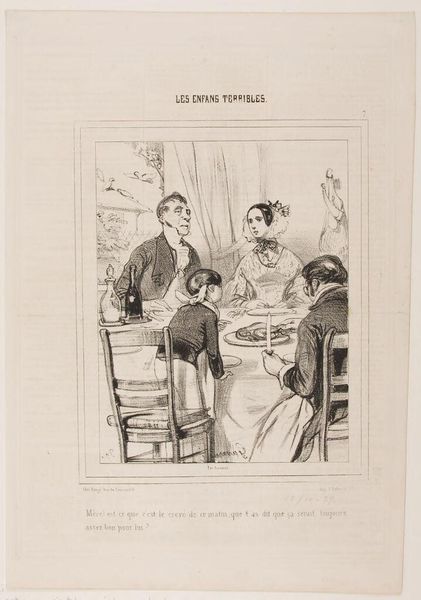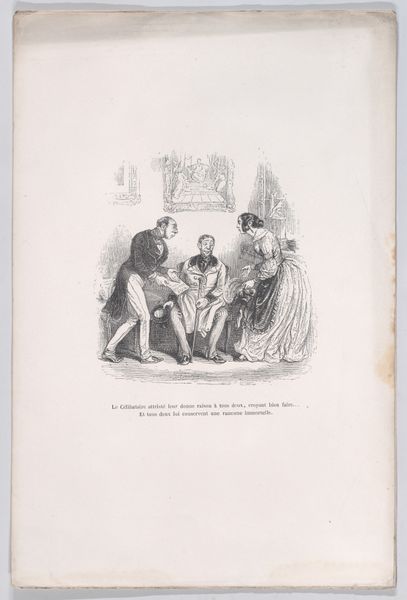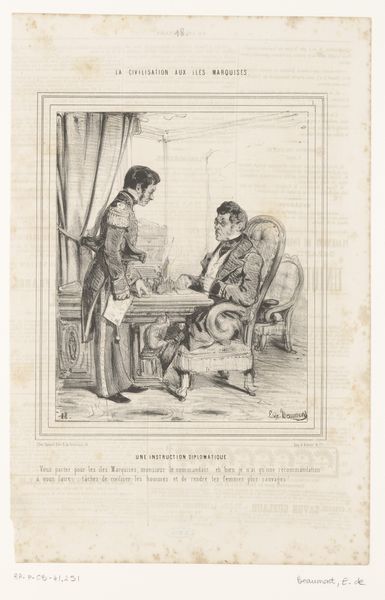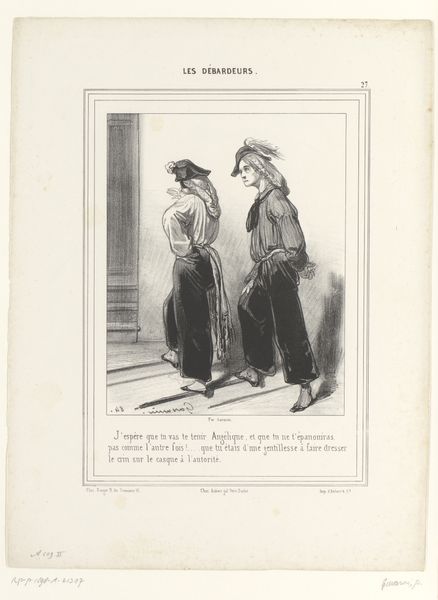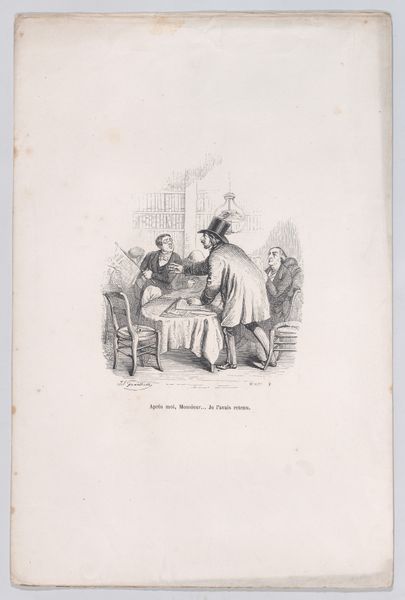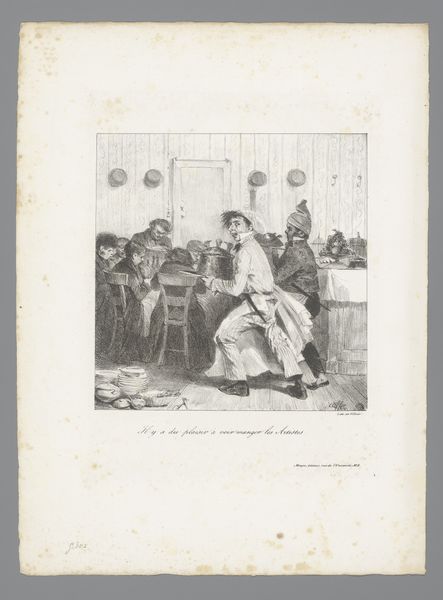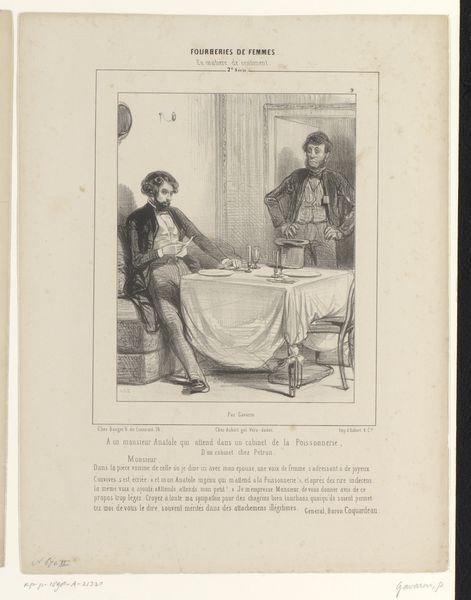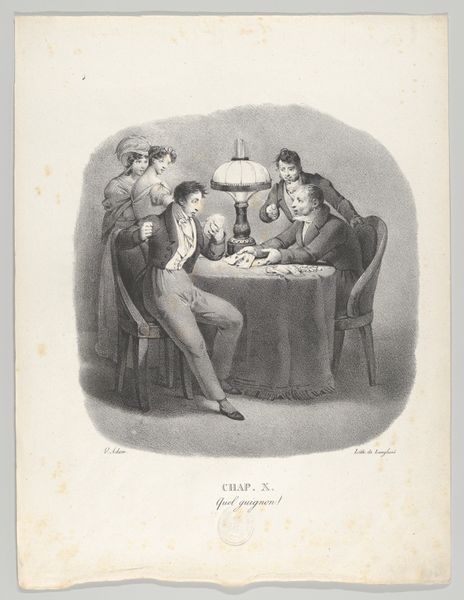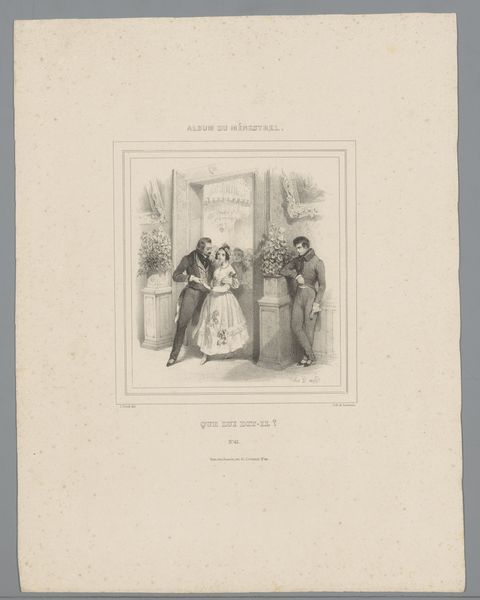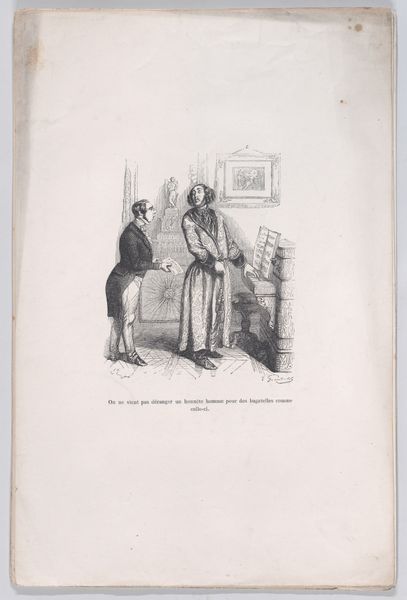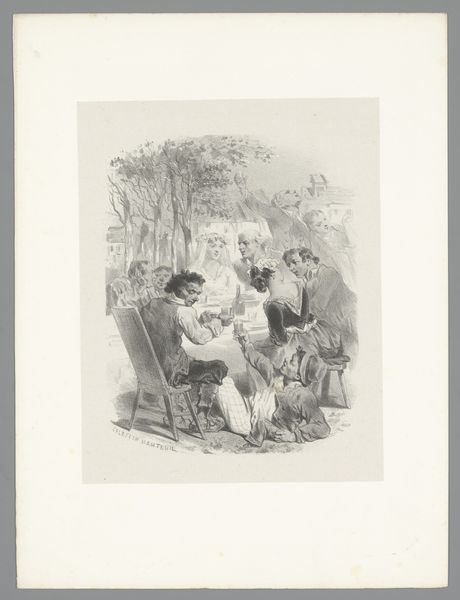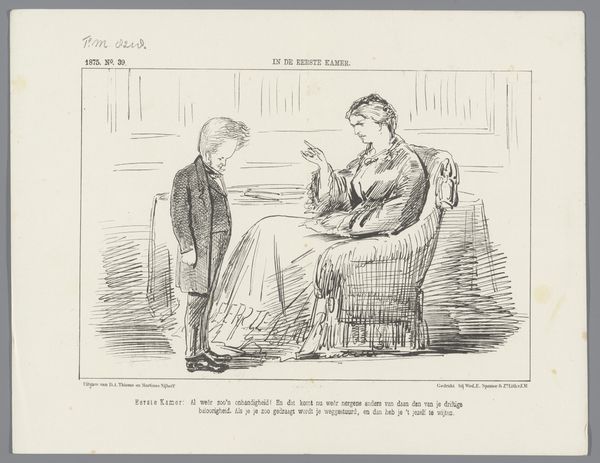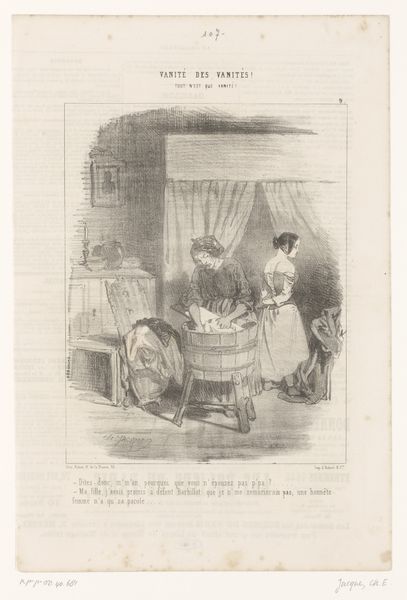
lithograph, print
#
lithograph
# print
#
caricature
#
romanticism
#
genre-painting
Dimensions: height 357 mm, width 277 mm
Copyright: Rijks Museum: Open Domain
Curator: This is "Family with a Guest at the Table," a lithograph from 1839 by Paul Gavarni, residing here at the Rijksmuseum. Editor: My first impression? It’s a scene dripping with bourgeois unease. Everyone seems stiff, a bit caricatured, almost… suffocating. Curator: Indeed. Gavarni was known for his social commentary, sharply observing the mores of Parisian society. Looking at this print through a contemporary lens, the composition screams power dynamics, wouldn't you agree? Who's allowed to be comfortable, who's performing for whom? Editor: Absolutely. Consider the print’s original context. The July Monarchy of Louis-Philippe was marked by social stratification, a widening gap between the burgeoning bourgeoisie and the working class. Gavarni, working in print media, held a mirror to that era. Look at the fashions, for instance. The high-necked dress of the woman contrasts starkly with the disheveled appearance of the seated male figure, presumably the titular guest. Curator: The discomfort in their faces is palpable. And the child, positioned between them, feels less like a carefree presence and more like another piece of furniture in this performance of domesticity. Do you see a tension there, a push and pull of traditional expectations against nascent rebellious identities? Editor: Yes. Think of feminist theory and how women's roles were strictly defined in the 19th century. This image presents a snapshot of that pressure. The woman's face reads almost as resignation. But consider, too, the economics. The art market increasingly dictated the kind of "acceptable" imagery—scenes that upheld social order were often preferred, contributing to what gets made and consumed. Curator: And it raises interesting questions. Was Gavarni merely reflecting the era, or actively critiquing it? Where does social commentary become complicity, or, conversely, radical visibility? The lithographic medium itself democratized art, enabling access to commentary like this far beyond the salon crowd. Editor: I see him as an observer, albeit a very shrewd one. Through sharp lines and character exaggerations, Gavarni prompts us to think about the unspoken tensions beneath the veneer of respectable society, a role that still feels powerfully relevant today. Curator: A potent glimpse into history, revealing social intricacies still relevant to conversations about class, power, and belonging. Editor: Agreed. It is an insightful work, highlighting the nuances and conflicts present within social dynamics.
Comments
No comments
Be the first to comment and join the conversation on the ultimate creative platform.
